Beyond the bus factor GitHub Universe - San Francisco 27th October 2025 @RCheesley
Slide 1

Slide 2
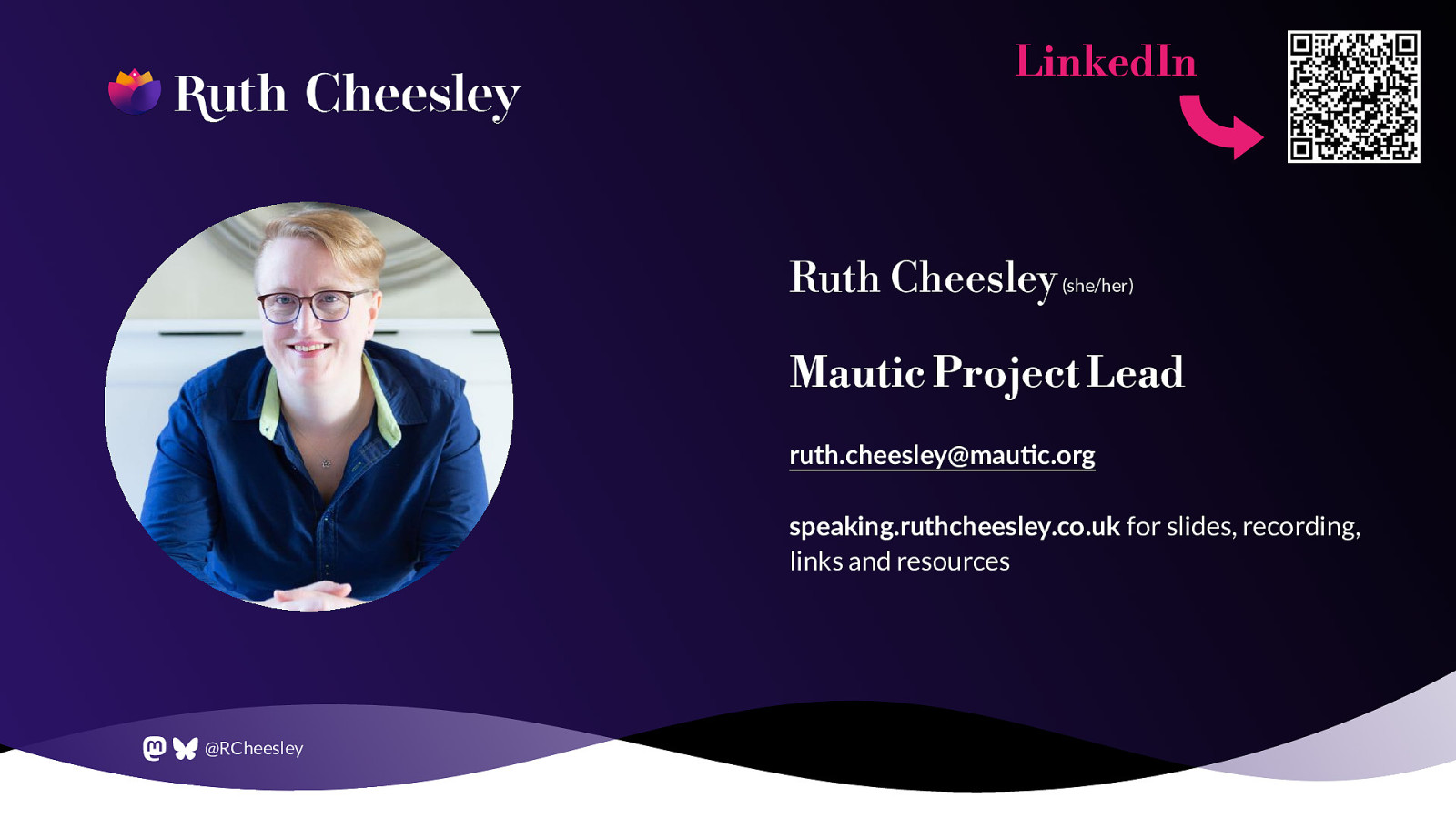
LinkedIn Ruth Cheesley (she/her) Mautic Project Lead ruth.cheesley@mau c.org speaking.ruthcheesley.co.uk for slides, recording, links and resources ti @RCheesley
Slide 3
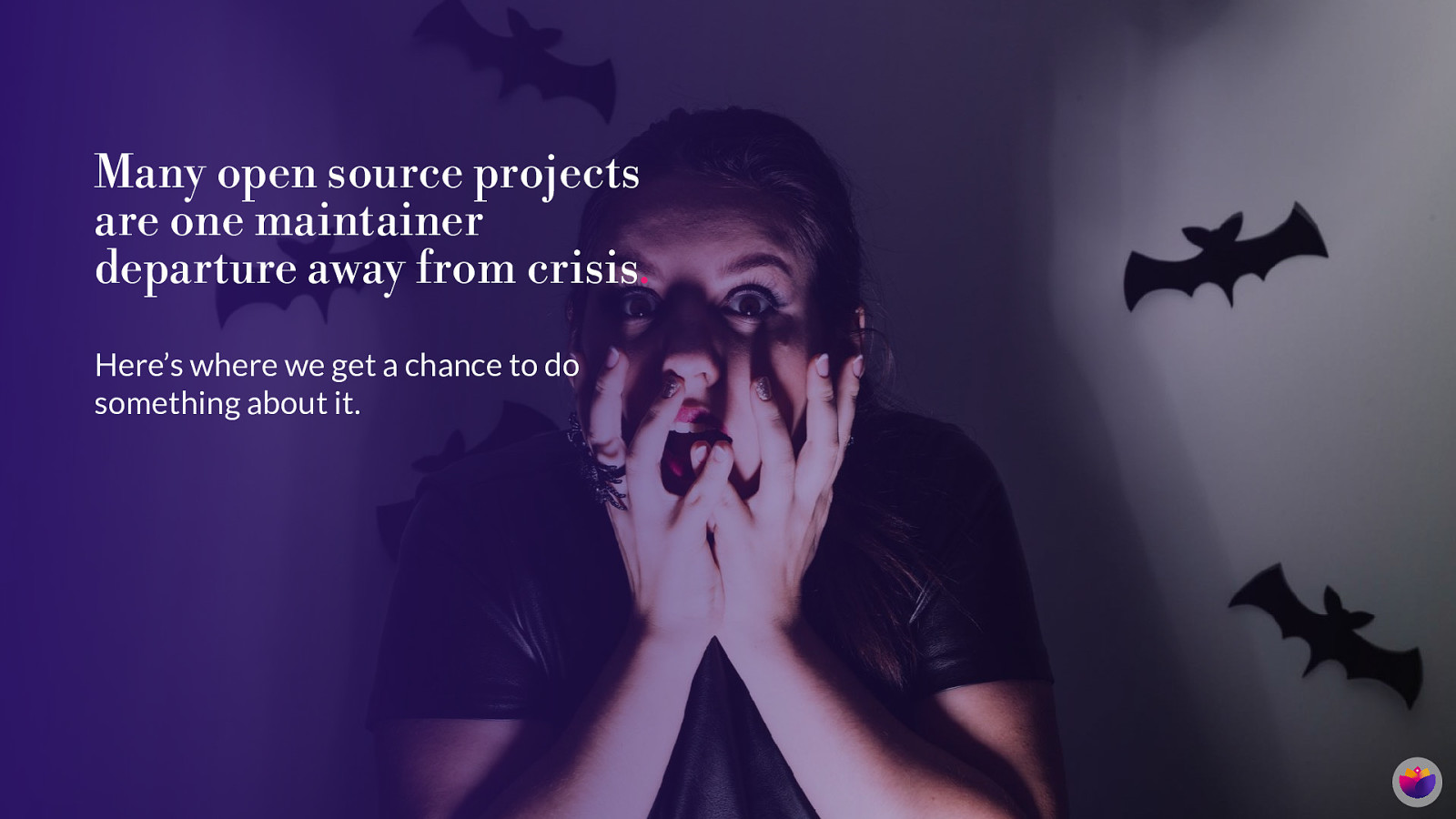
Many open source projects are one maintainer departure away from crisis. Here’s where we get a chance to do something about it.
Slide 4
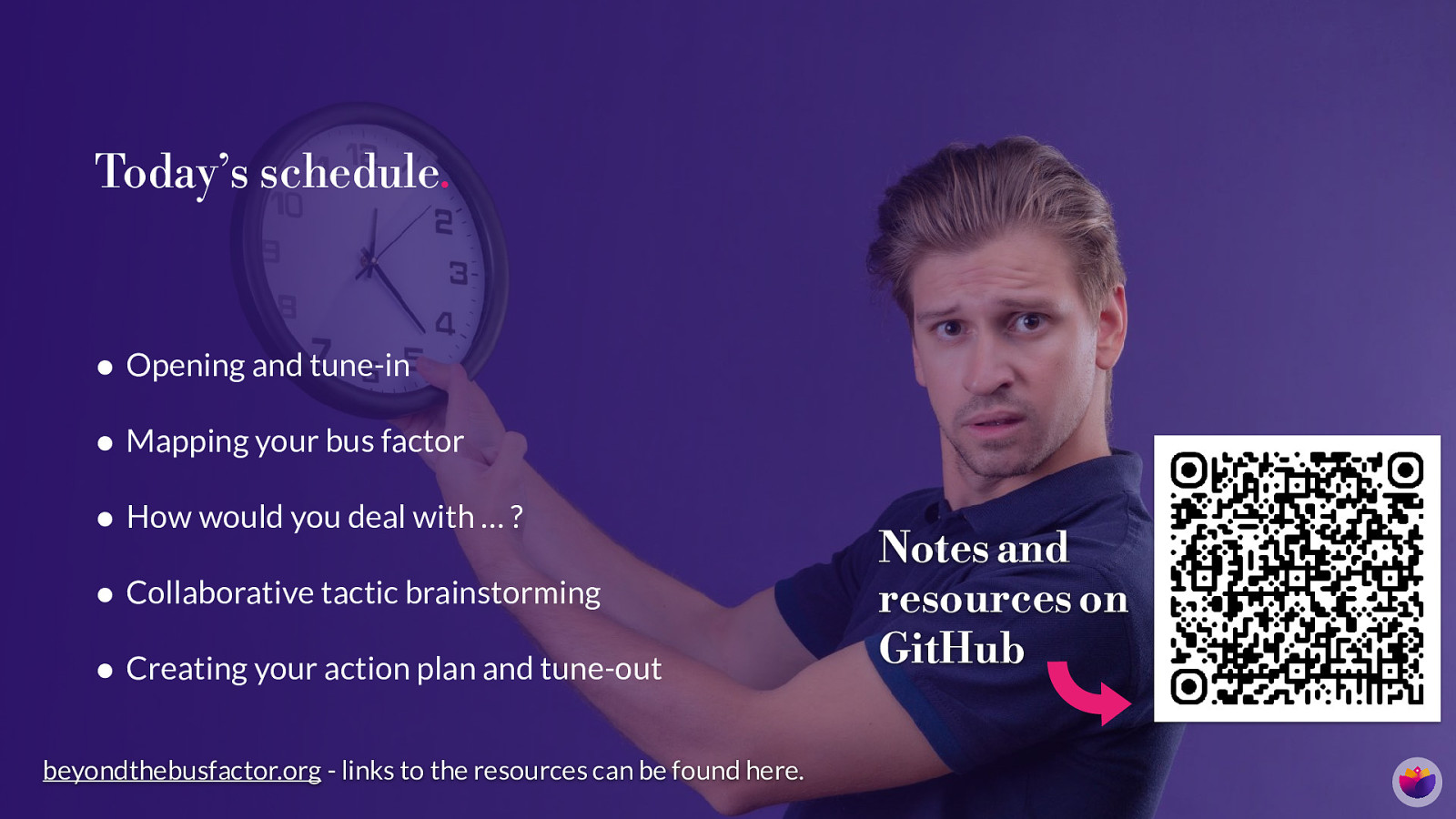
Today’s schedule. • Opening and tune-in • Mapping your bus factor • How would you deal with … ? • Collaborative tactic brainstorming • Creating your action plan and tune-out beyondthebusfactor.org - links to the resources can be found here. Notes and resources on GitHub
Slide 5

Quick re question: Who are you, and what’s your biggest fear about your project’s sustainability? fi Let’s go around the room, and try to summarise in just 1-2 sentences
Slide 6

Mapping your bus factor. Most issues relating to succession planning fall into three broad categories: 1. Technical areas such as code, infrastructure 2. Governance, legal, nance and decision making fi 3. Community and relationships
Slide 7
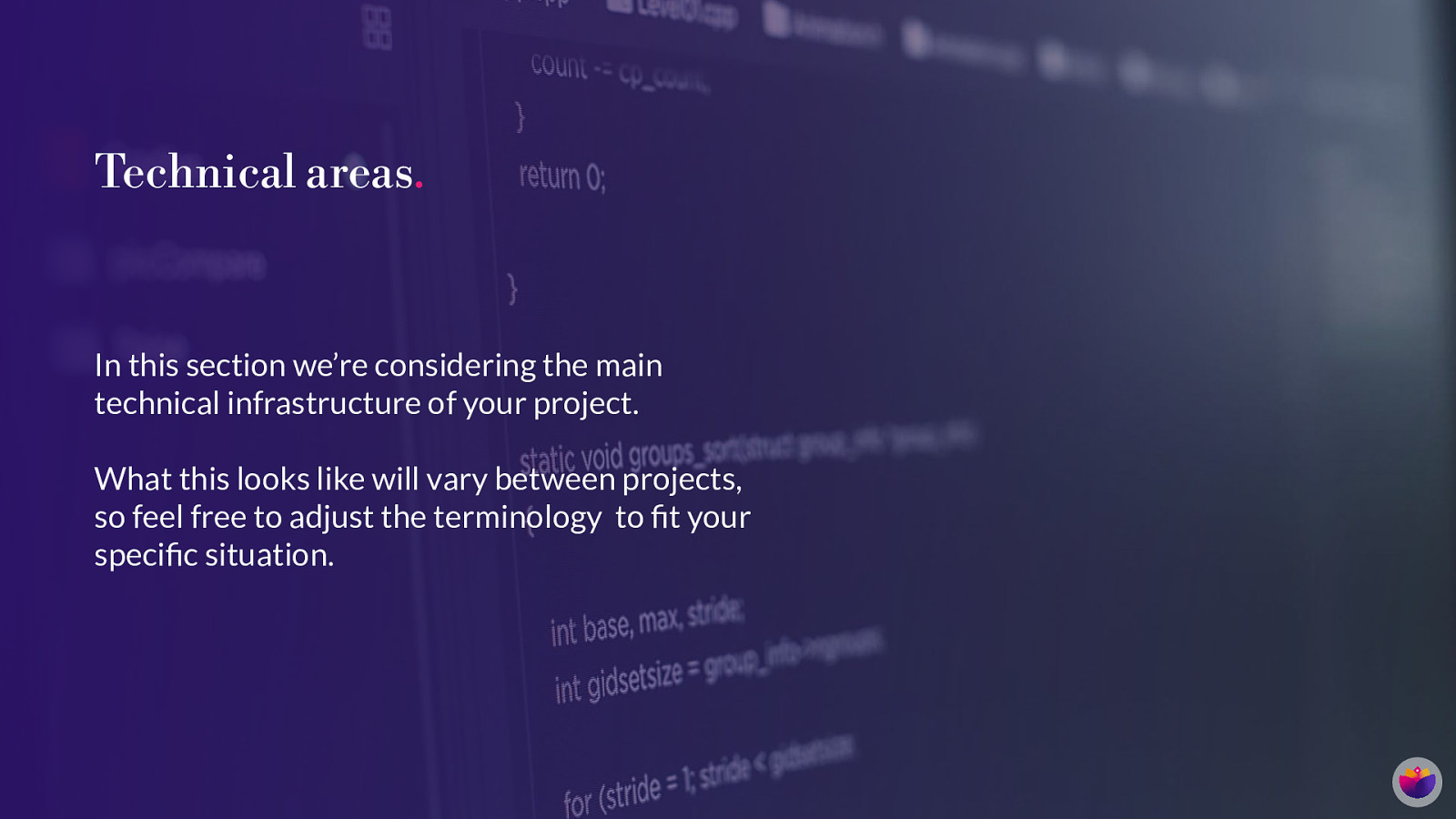
Technical areas. In this section we’re considering the main technical infrastructure of your project. fi fi What this looks like will vary between projects, so feel free to adjust the terminology to t your speci c situation.
Slide 8

Score your risks. • 🔴 Only one person = critical risk if they leave • 🟡 Two people = risky but potentially survivable • 🟢 More than three people = resilient
Slide 9
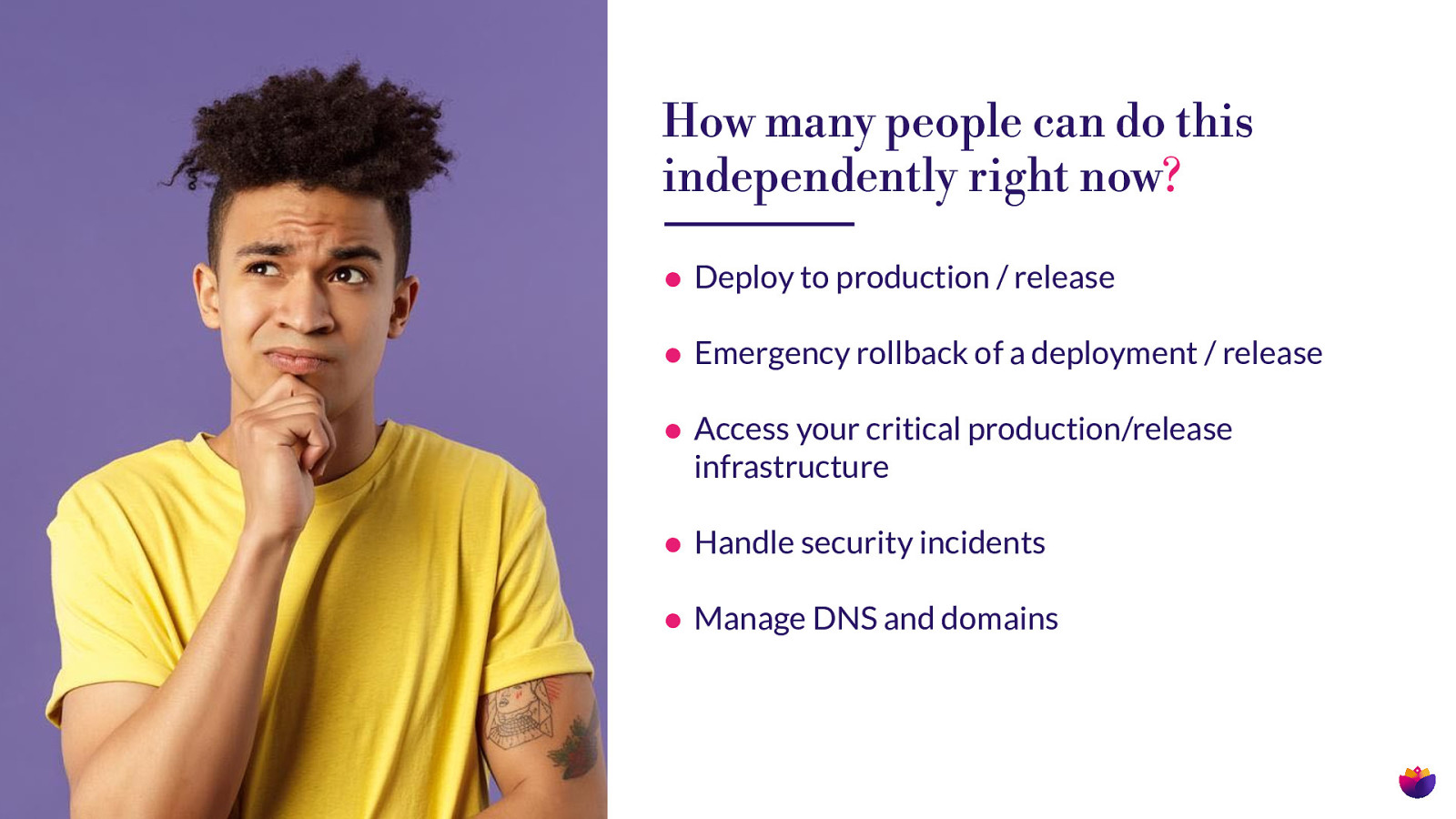
How many people can do this independently right now? • Deploy to production / release • Emergency rollback of a deployment / release • Access your critical production/release infrastructure • Handle security incidents • Manage DNS and domains
Slide 10
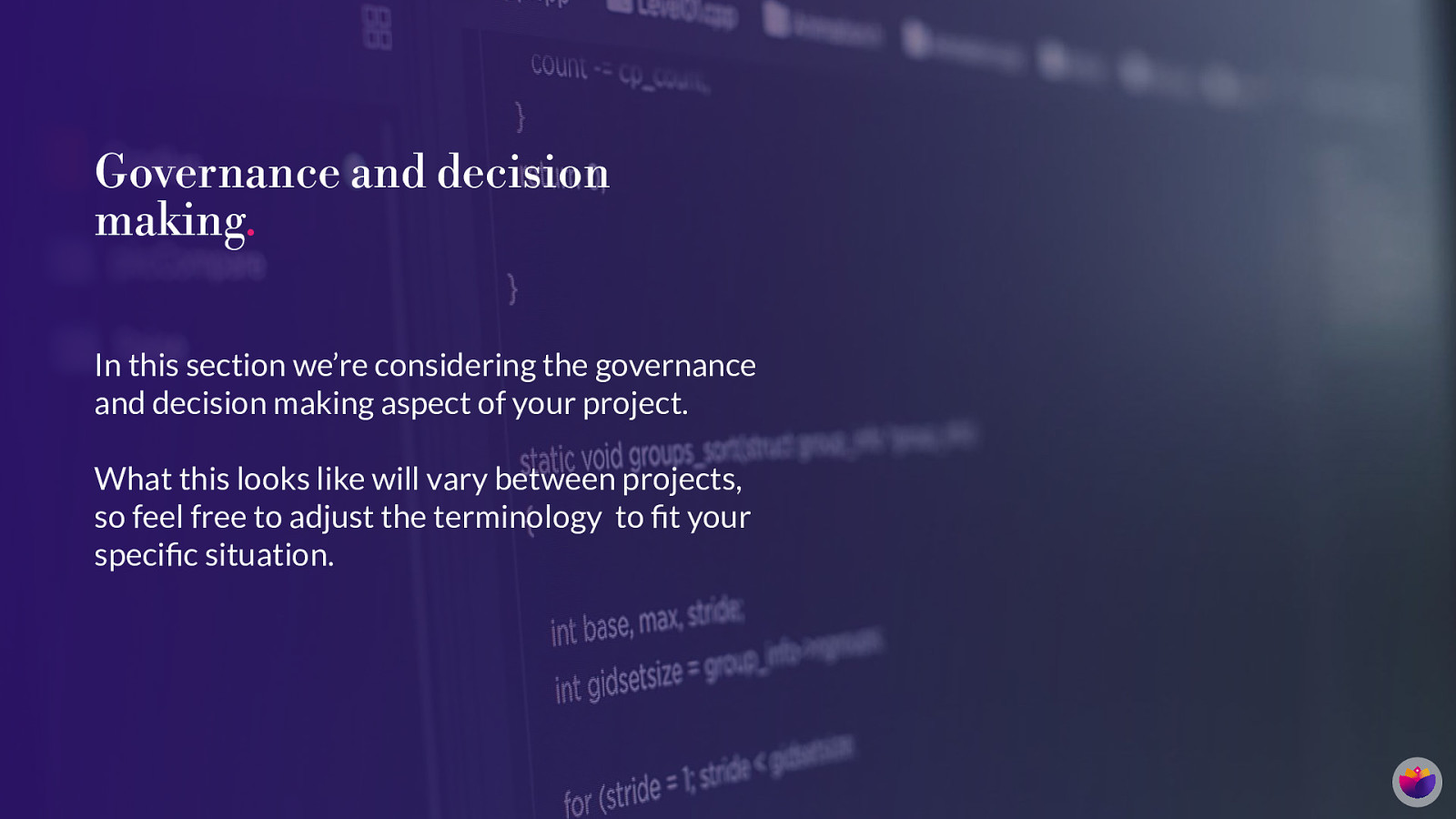
Governance and decision making. In this section we’re considering the governance and decision making aspect of your project. fi fi What this looks like will vary between projects, so feel free to adjust the terminology to t your speci c situation.
Slide 11
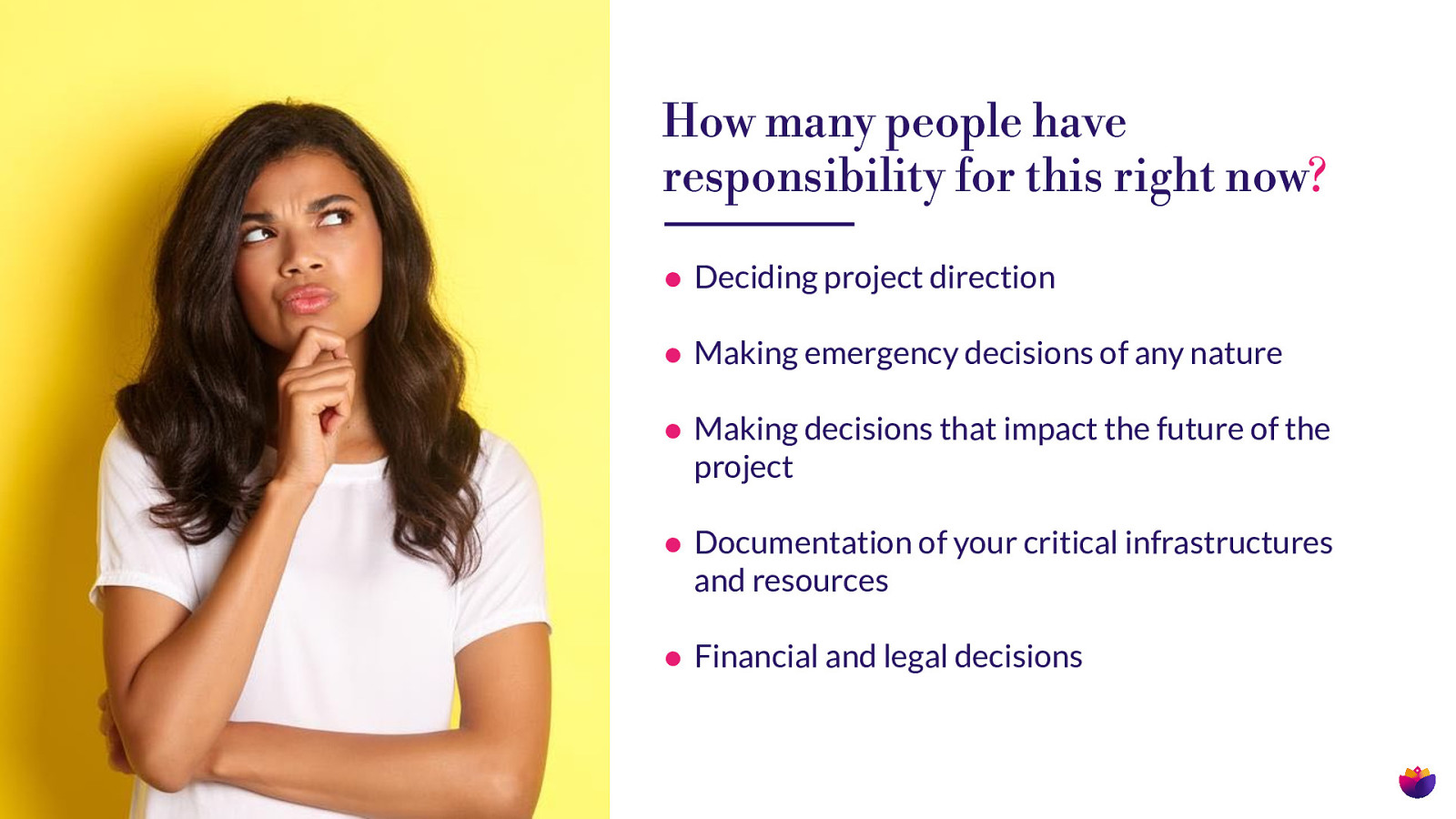
How many people have responsibility for this right now? • Deciding project direction • Making emergency decisions of any nature • Making decisions that impact the future of the project • Documentation of your critical infrastructures and resources • Financial and legal decisions
Slide 12

Community and relationships. In this section we’re considering your community, and any other people-to-people relationships that are important to your project. fi fi What this looks like will vary between projects, so feel free to adjust the terminology to t your speci c situation.
Slide 13
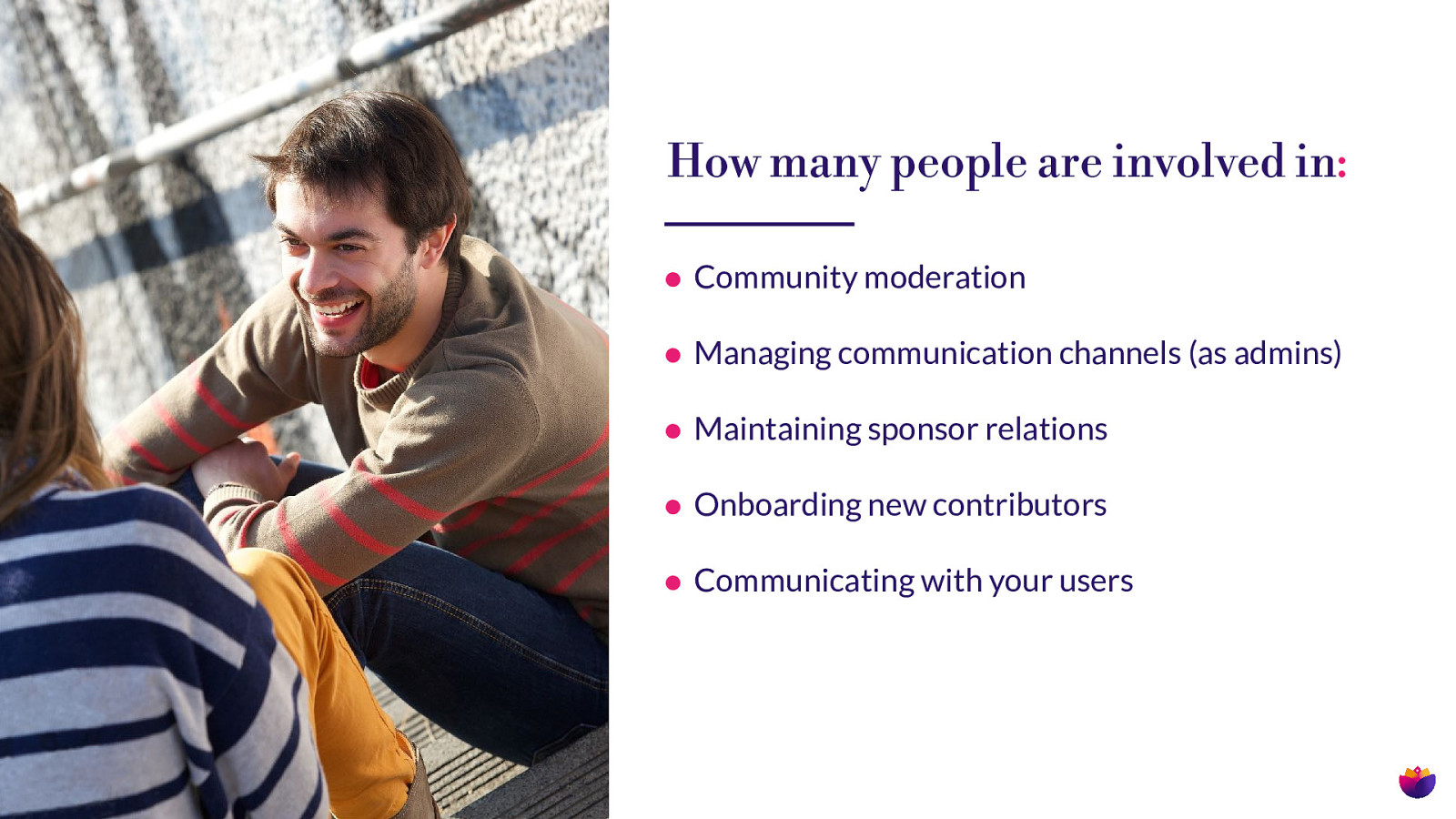
How many people are involved in: • Community moderation • Managing communication channels (as admins) • Maintaining sponsor relations • Onboarding new contributors • Communicating with your users
Slide 14
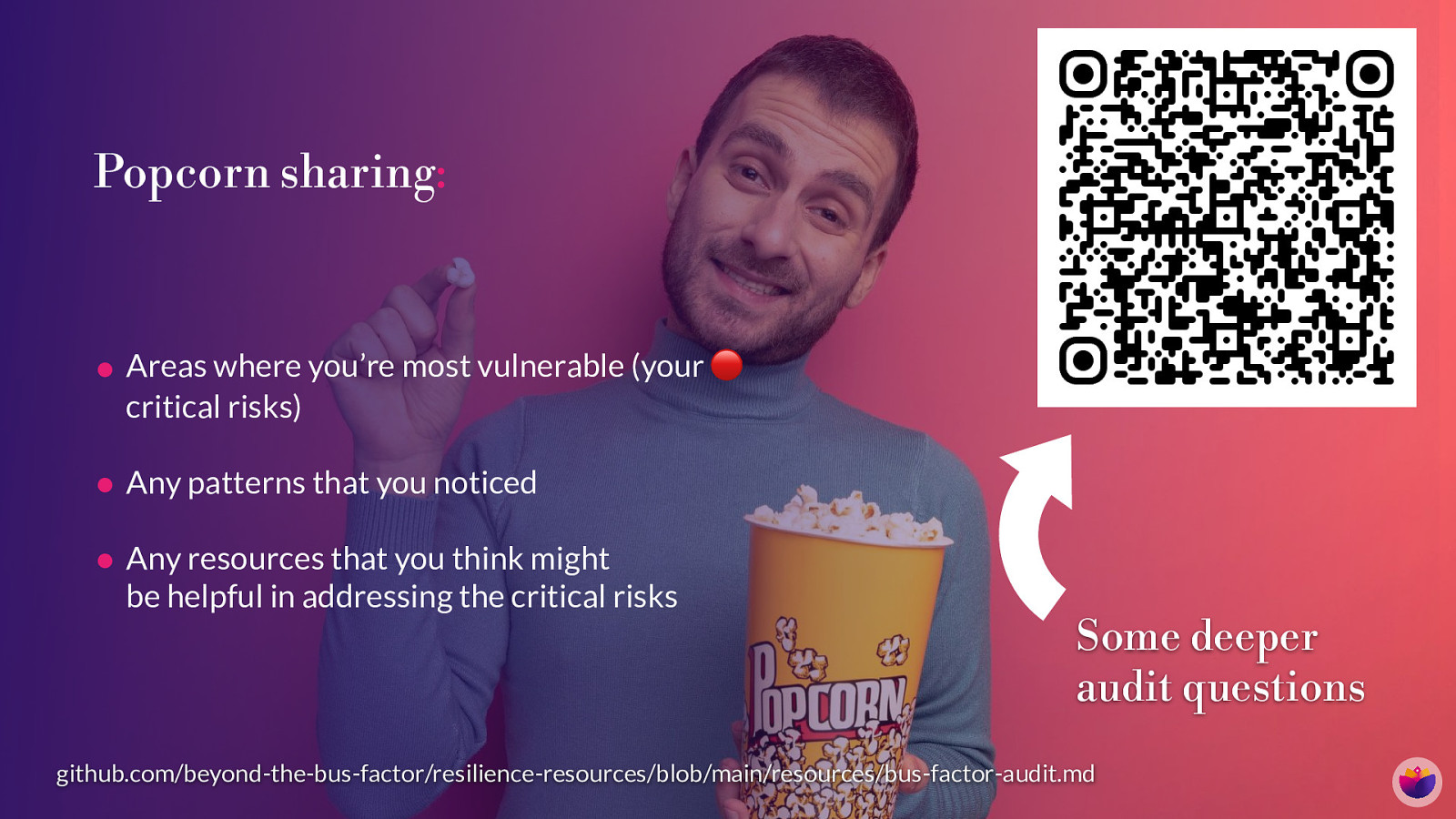
Popcorn sharing: • Areas where you’re most vulnerable (your 🔴 critical risks) • Any patterns that you noticed • Any resources that you think might be helpful in addressing the critical risks Some deeper audit questions github.com/beyond-the-bus-factor/resilience-resources/blob/main/resources/bus-factor-audit.md
Slide 15
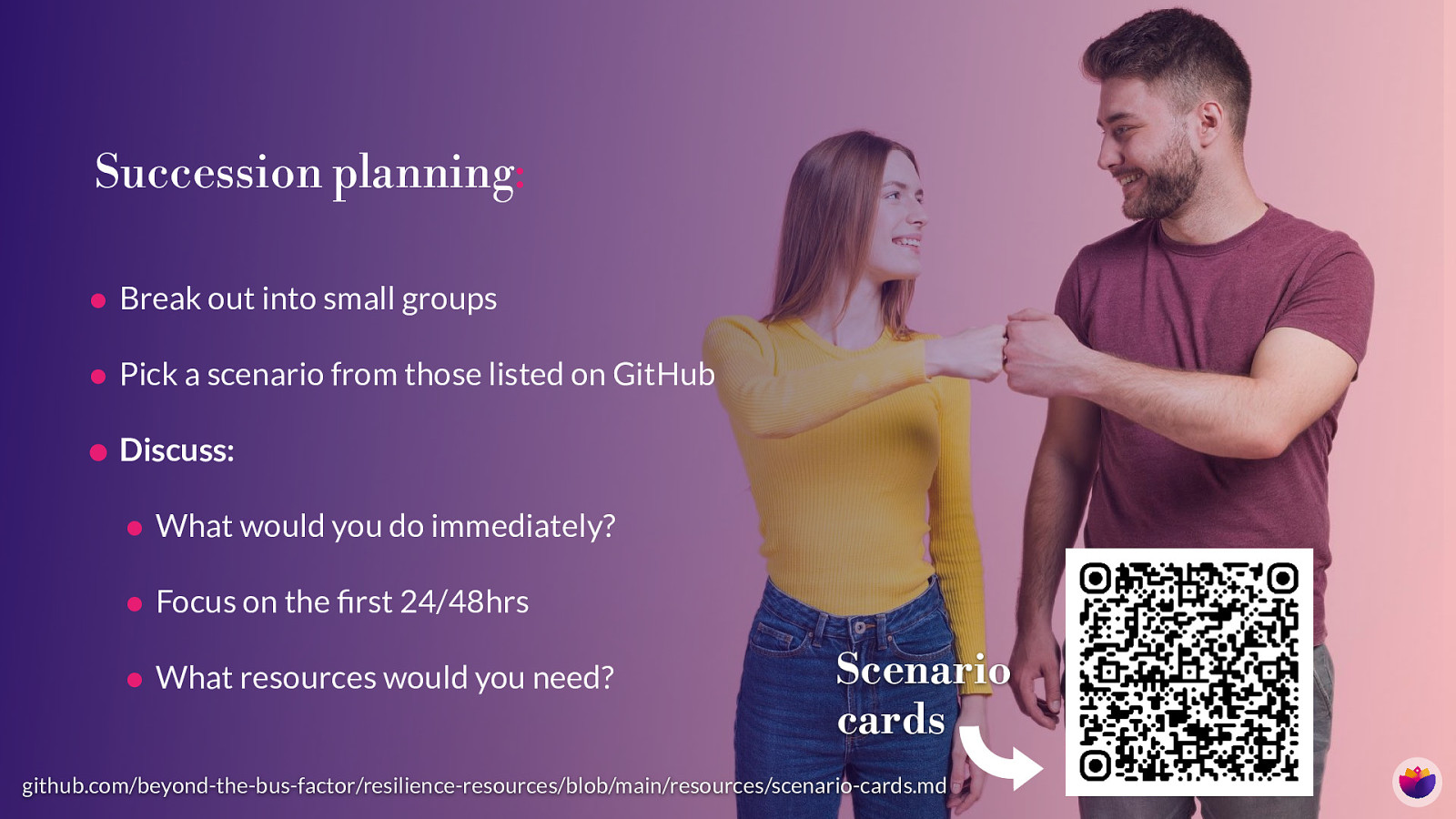
Succession planning: • Break out into small groups • Pick a scenario from those listed on GitHub • Discuss: • What would you do immediately? • Focus on the rst 24/48hrs • What resources would you need? Scenario cards fi github.com/beyond-the-bus-factor/resilience-resources/blob/main/resources/scenario-cards.md
Slide 16

Table sharing: • One key insight • What surprised you? • What would you have no idea how to handle? • What resources might be helpful to navigate this situation?
Slide 17
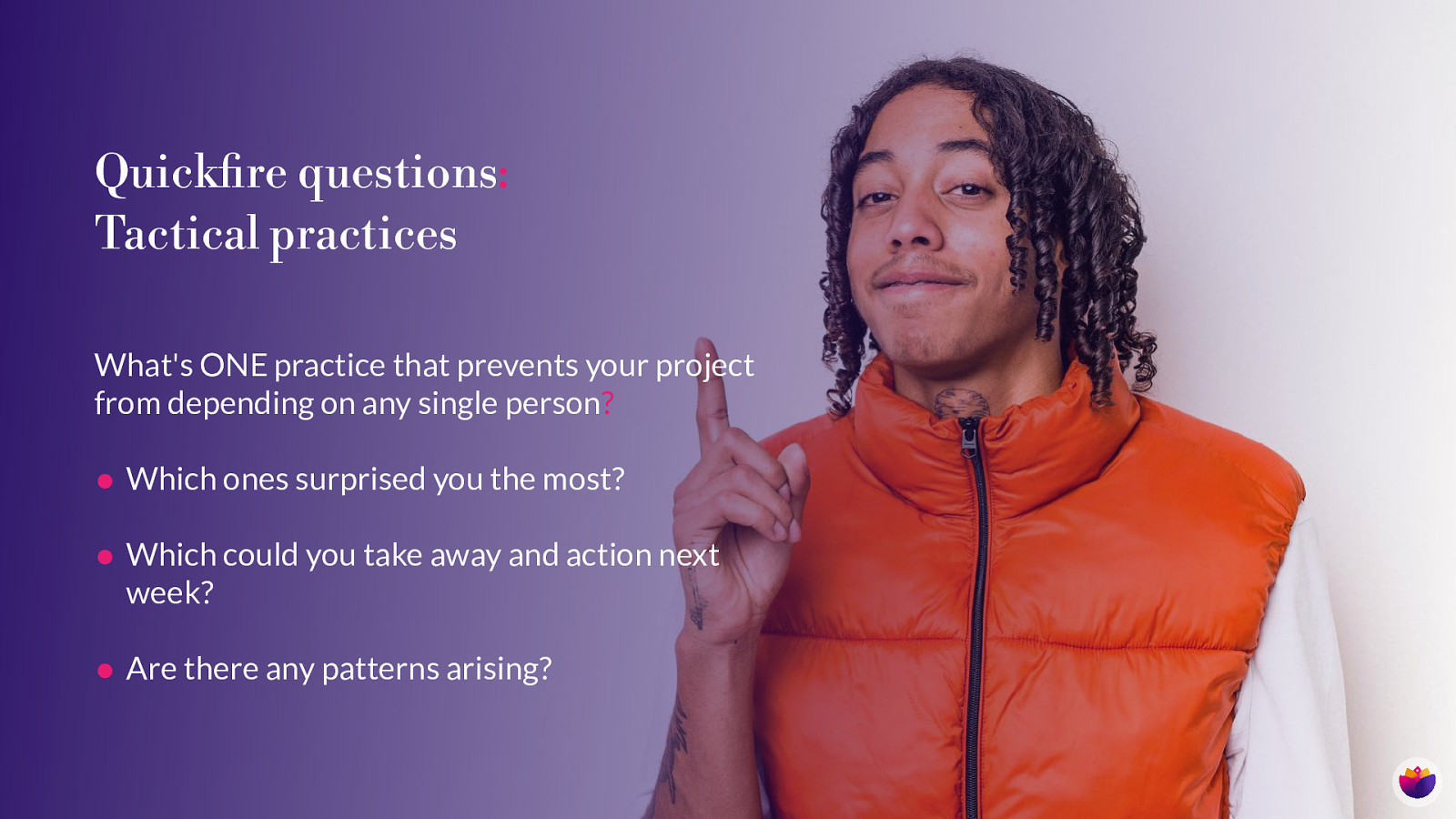
Quick re questions: Tactical practices What’s ONE practice that prevents your project from depending on any single person? • Which ones surprised you the most? • Which could you take away and action next week? fi • Are there any patterns arising?
Slide 18
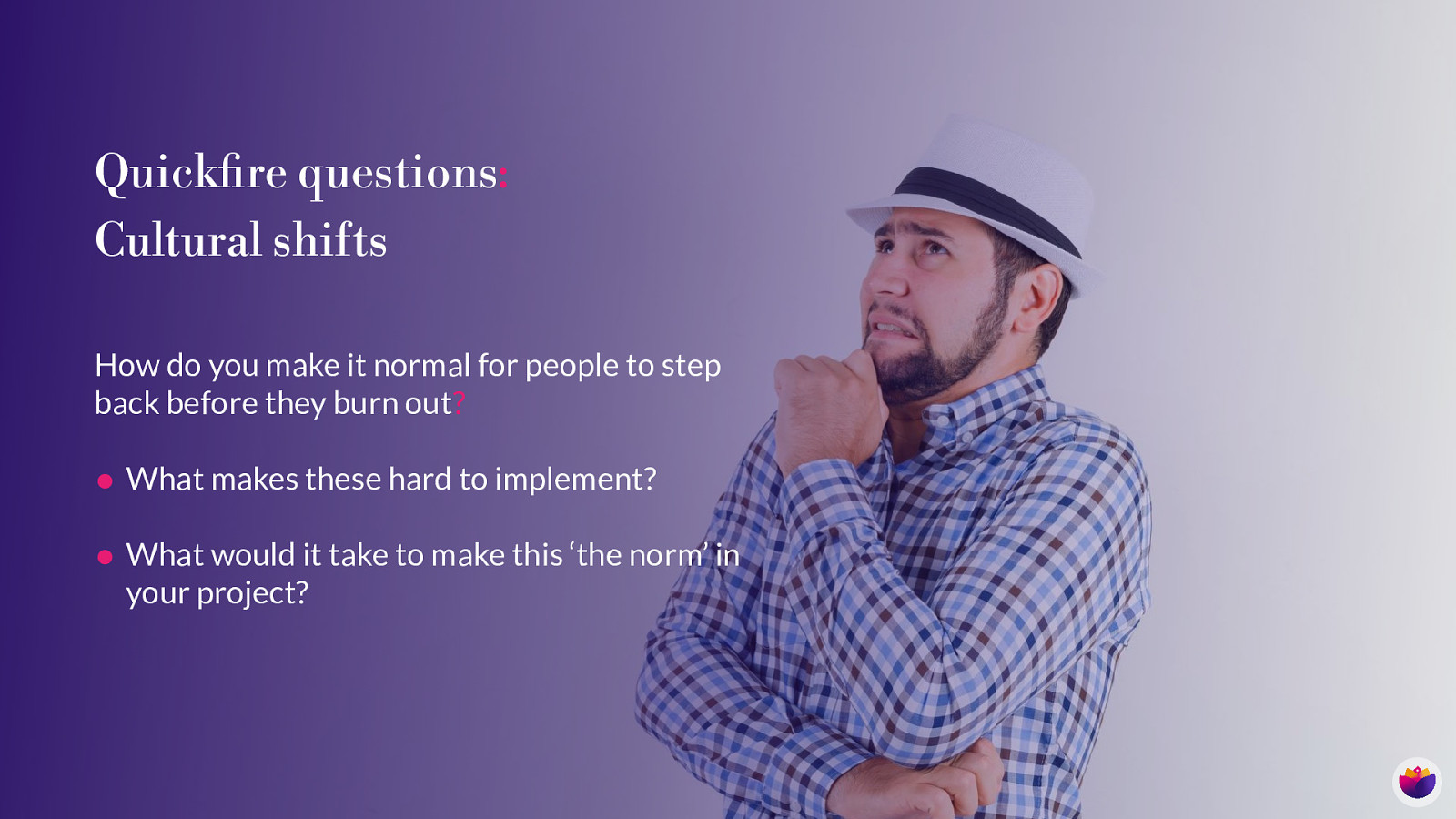
Quick re questions: Cultural shifts How do you make it normal for people to step back before they burn out? • What makes these hard to implement? • What would it take to make this ‘the norm’ in fi your project?
Slide 19
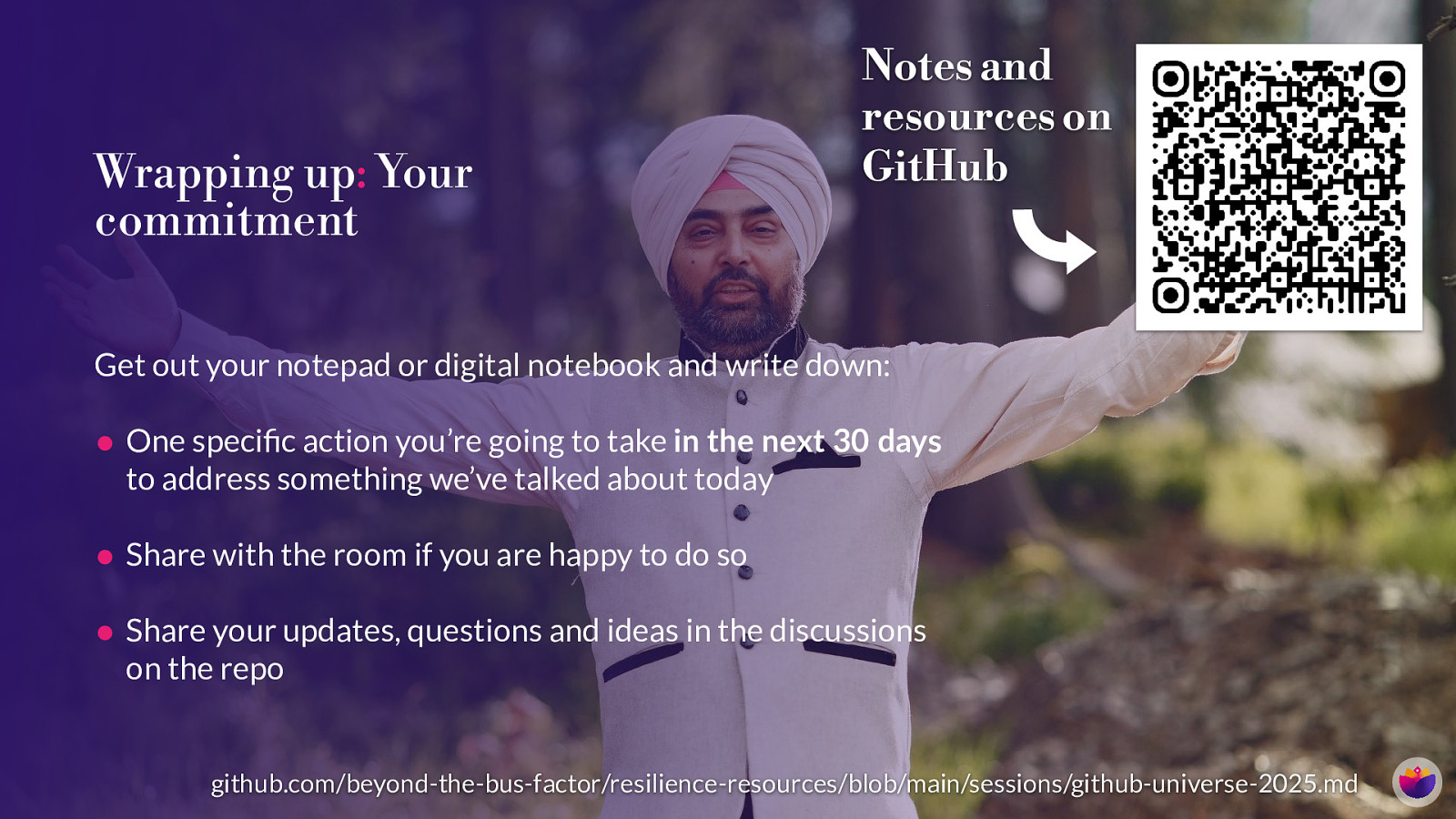
Wrapping up: Your commitment Notes and resources on GitHub Get out your notepad or digital notebook and write down: • One speci c action you’re going to take in the next 30 days to address something we’ve talked about today • Share with the room if you are happy to do so • Share your updates, questions and ideas in the discussions on the repo fi github.com/beyond-the-bus-factor/resilience-resources/blob/main/sessions/github-universe-2025.md
Slide 20
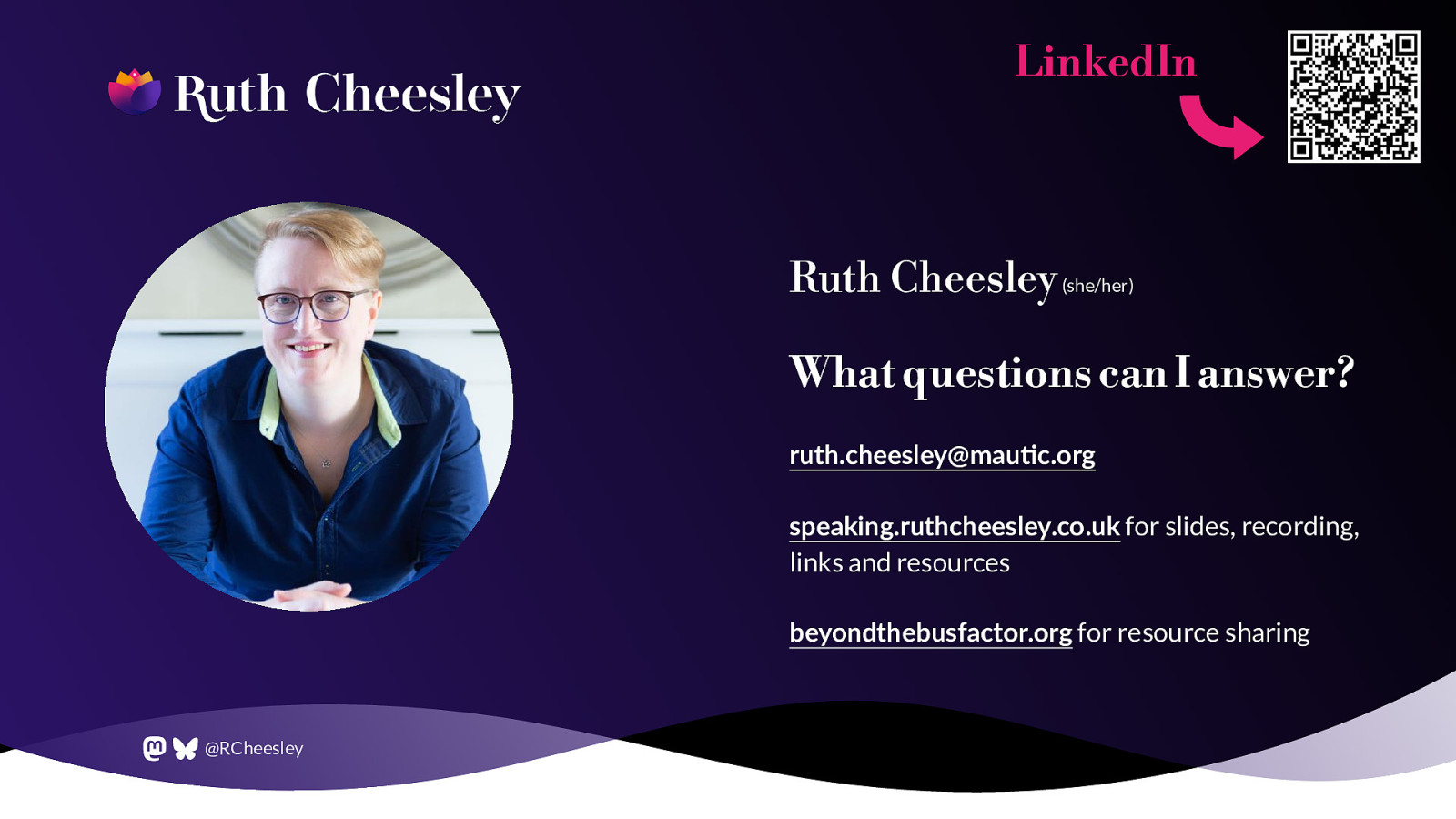
LinkedIn Ruth Cheesley (she/her) What questions can I answer? ruth.cheesley@mau c.org speaking.ruthcheesley.co.uk for slides, recording, links and resources beyondthebusfactor.org for resource sharing ti @RCheesley